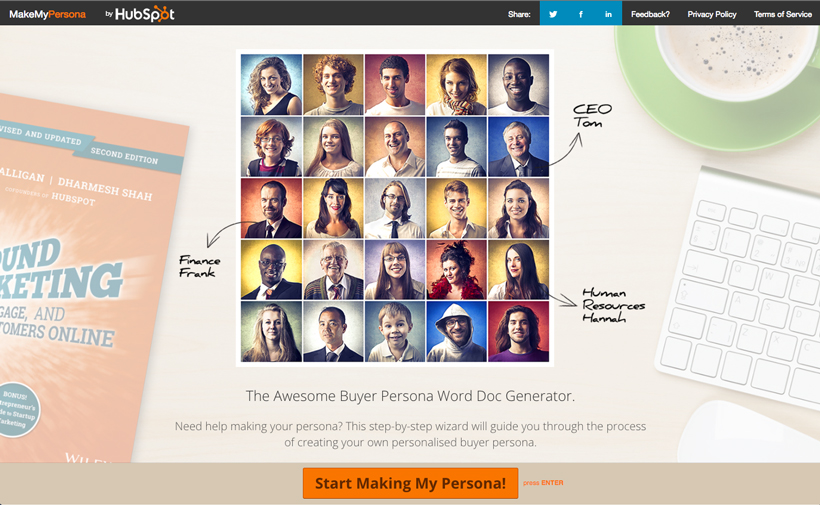“The company without a strategy is willing to try anything.” – Michael Porter
Don’t be one of those B2B companies willing to try anything when it comes to your content.
According to this Demand Gen report, 67 percent of B2B buyers rely more on content to make their purchasing decisions than they did a year ago. If your content is conceptualized, created and distributed under a haphazard strategy (you do have a strategy, right?), you’re going to get haphazard results. And that never helped any company’s bottom line (or anything else, for that matter).
Here are five things that the best B2B marketing strategies have in common, so you can align your efforts to find success:
1. A well-defined target audience
The best marketing campaigns don’t try to appeal to a broad audience. Instead, they target at least one fully defined persona that represents the best target market segment. Flesh out this persona with appropriate demographic information and then take stock of motivations. Ask these questions:
- What problems are your customers facing?
- Which ones can you solve?
- What solutions have they tried and which ones are they considering?
- Do they use your product or service, and if so, how?
It’s also important to consider where on the ladder you’re most likely to have the greatest effect. While a manager or executive may have the final say before a purchase, there are often influencers and information-collectors that do much of the legwork. Your efforts may pay off better if you target that group instead of the decision-makers.
To make the process of defining your target market efficient, try HubSpot’s Make My Persona tool. It walks you through the process step by step, and the result is a document with all the details — right down to a photo of your ideal customer.
2. A clear, actionable solution
No matter how great the pitch or how personable the salesperson, nobody likes to be sold to. If you’re focused only on selling your products and services, your customers will start to feel pressured and uncomfortable. You may be able to close a few deals and keep a few leads coming in, but your results will be far from ideal.
Instead, think about your products and services as solutions to a problem — you possess the ability to make someone’s job easier, more efficient, more profitable. Reposition yourself as a problem solver, and then focus your marketing strategy on hitting those pain points and offering to relieve them.
For a little help discovering what your customers’ pain points are, read this post from Copytactics. Once you create content around those pain points, use it to power a robust social media presence focused on problem-solving content.
3. A well-worn path
Creating a well-worn path begins with laying out a clear course for people to follow during the buying process. It’s not enough to create advertisements and put information on your website for people to find. Instead, the best marketing strategies gently nudge buyers down the funnel in a calculated, predictable way.
The biggest messages are aimed at attracting attention and presenting your solutions, and the most detailed messages reassure readers that you’re the one. They also tell a potential customer exactly what action to take next in the form of a call-to-action written in the first person so readers feel in charge. In fact, according to this Unbounce post, one company was able to boost the effectiveness of their call to action by 90 percent just by changing it from “Start your free trial” to “Start my free trial.”
Creating a map of your customer’s journey can be a complex process. To make mapping more organized (and even a little fun), check out this collection of journey mapping tools from Service Design Tools.
4. Specific, measurable goals
“Get more sales” is not a specific, measurable goal. While you can certainly see if your overall sales have gone up in the last 30 days, it will be difficult to attribute that change to any particular segment of your strategy without considering a few other metrics as well. When 93 percent of marketers say they are under pressure to deliver a measurable ROI (Leapfrog Marketing Institute) and 50 percent find it difficult to attribute marketing activity directly to results (Forrester), you can see the importance of setting goals that are measurable and attributable to your marketing efforts.
Instead of broad goals, set smaller, more targeted goals that can be measured at various stages of the customer’s journey to measure the overall effectiveness of your strategy. Specific goals could include:
- Boosting new website visitors or email clicks
- Increasing visits to a landing page
- Converting more visitors using downloads, free trials or other premium content
When you have multiple goals to meet at various points in the buying process, you’ll be able to identify where you’re doing well and at which point you are losing the most potential customers — and then you can refocus your efforts.
5. A content engine
Today’s successful marketing strategies include a whole lot of written content that is destined for blogs, emails and premium downloads. This content not only needs to be created and distributed, it also needs the ability to multiply for successful channels and provide a reliable, steady stream of information for interested readers.
If the thought of writing a novel’s worth of content on a regular basis makes you nervous, take a page from the marketing pros and learn how to repurpose and repackage your content so it’s fresh and useful without reinventing the wheel. For example, an ebook that is meant to be a premium download can also be broken down into several blog posts. The reverse also works — look for blog posts with similar topics and repackage them as a whitepaper or an ebook. This post from Quick Sprout features additional suggestions for repurposing content.
Bring it all together
The most successful marketing campaigns center around the customer’s experience. They begin with a problem and a solution, and everything else is built around presenting this solution in a way that is helpful and informative to the reader. They present a clear path and anticipate possible sticking points to work out the kinks ahead of time. Lastly, they are scalable: to keep costs in check while still being able to ramp up, the most successful marketing campaigns use and reuse content and materials to continually provide useful, fresh information to help people choose the right solution for their problems.





